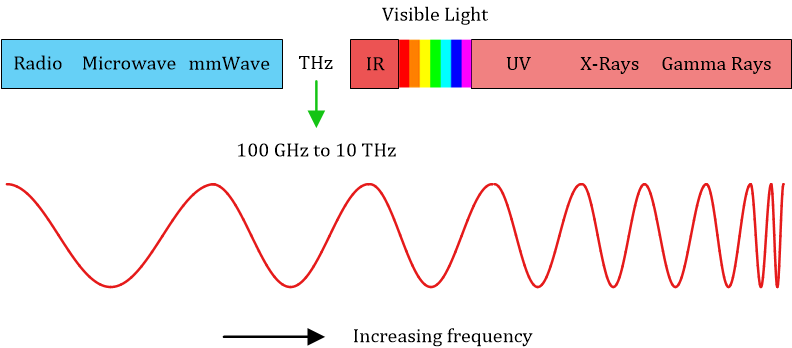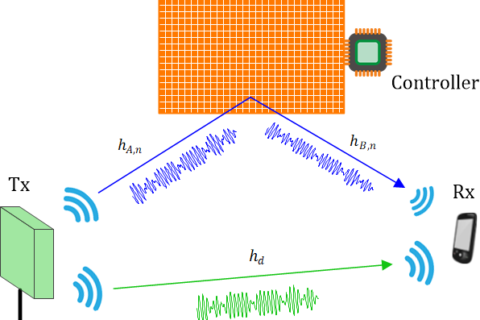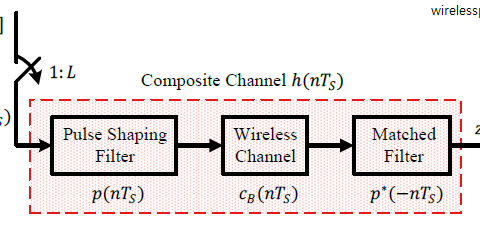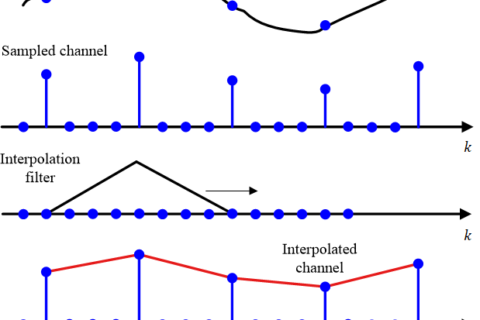Larger bandwidth has been the single most contributing factor in higher data rates throughout the history of wireless communication. In the past decade, this resulted in expansion towards mmWave bands that were adopted in 5G systems. Now the trend is continuing towards Tera Hz (THz) bands where large swathes of bandwidth are available for instantaneous and seamless transfer of huge amounts of information. This is because symbol rate $R_M$ is directly proportional to the bandwidth in digitally modulated signals.
\[
R_M=\frac{1}{T_M} \propto B
\]
This is shown in the figure below where a high data rate implies a short symbol time $T_M$ that results in a wider spectrum.

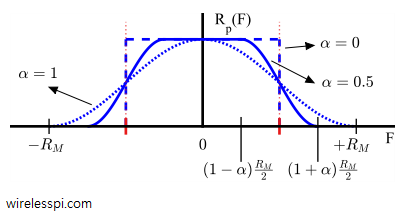
On THz carrier frequencies, THz of bandwidth is available that can result in data transfer at a rate of Tbps!
Where is THz Band?
In the above figure, the spectrum of visible light is the most commonly known (and shown out of scale here).
- The color with the lowest frequency is red with a frequency of around $4.3\times 10^{14}$ Hz. The band immediately below the red is then termed Infrared.
- On the other end of the spectrum is violet with an approximate frequency of $7.5\times 10^{14}$ Hz. This is why the neighboring band is called Ultra-Violet (UV).
Immediately below the Infrared is the THz band. Originally, the mmWave spectrum lies between 30 GHz and 300 GHz that can be verified through the relation $c=f\lambda$. However, the wireless community associates the term mmWave with the band between 10 GHz and 100 GHz. Going further, the TeraHz band is defined as the portion of the spectrum between 100 GHz and 10 THz as illustrated at a logarithmic scale in the figure below.

Channel characterization in THz band is different than lower bands because there are peculiar effects related to propagation of the electromagnetic waves. This includes attenuation due to molecular absorption and scattering from small particles comparable in size to THz wavelengths. It seems that mmWave communication at the lower side of the spectrum and optical transmission (including infrared, visible light and ultra-violet) at the higher side are more attractive alternatives. Nevertheless, THz communication offers its own advantages as we see below [1].
A Comparison of mmWave with Terahertz
Some of the key differences between the usage of mmWave and THz bands are as follows.
Bandwidth
mmWave band have been adopted in 5G cellular standard as a key enabler for Gbps data transmission over a distance of a few meters. This has an impact on diverse applications ranging from audio and video delivery to autonomous cars and vehicular networks. However, the available bandwidths in mmWave spectrum are still on the order of 7-9 GHz.
This implies that to achieve target data rates of up to 100 Gbps, an extremely high level of spectral efficiency of 11-14 bits/s/Hz need to be realized. This can be attained through modulation and coding rates that are quite difficult to implement at such clock speeds. At THz frequencies, a relatively modest spectral efficiency of a few bits/s/Hz is enough to meet the requirements.
Directionality
One of the key features of mmWave communication is beamforming in desired directions and interference reduction in undesired directions. This is accomplished through antenna arrays with several elements that give rise to beam patterns unattainable in single antenna systems.

At high frequencies and short wavelengths exhibited by THz waves, an even larger number of antenna elements can be packed within the same physical dimensions. This implies that THz waves are more directional than mmWave. Systems operating at THz frequencies can therefore reduce the transmit power and interference among the users.
Security
With growing connectivity come increasing concerns of security. Low frequency transmissions are inherently insecure due to signal propagation (in general) in a broad range of directions that can be received and decoded by unauthorized entities.
A consequence of high directionality at THz frequencies is a lower chance of signal interception and hence eavesdropping. At such frequencies, signal energy can readily be absorbed in building materials, foliage and other objects in the channel making penetration more difficult. This increases system security at the level of radio propagation.
Does this mean that transmission at even higher bands, say visible light communication, is better than THz communication? This is what we discuss next.
A Comparison of mmWave with Visible Light Communication (VLC)
Clearly, light is also an electromagnetic wave and it can be digitally modulated for information transfer. Advances in Light Emitting Diode (LED) have enabled high pulse rates at a low cost as well as low power consumption. Therefore, it is the technology of choice for many applications such as vehicle to vehicle communication, commercial dispalys, LiFi and healthcare.
On the downside, VLC requires transmitter and receiver alignments for maximum power transfer in a line of sight that is not easy to maintain in practice. There is also interference from ambient light sources that reduces the signal to noise ratio. In contrast, THz bands enable non-line of sight communication due to their lower frequencies. They are also less susceptible to interference from natural and man-made sources.
References
H. Elayan et al., "Terahertz Band: The Last Piece of RF Spectrum Puzzle for Communication Systems", IEEE Open Journal of the Communications Society, Vol. 1, Nov 2019.
